
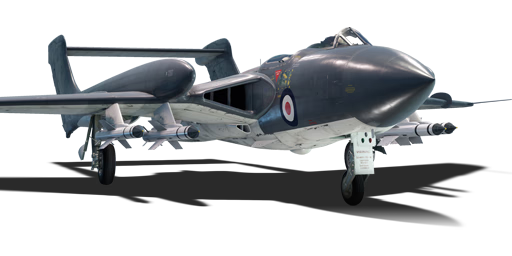


During the late 1940s, de Havilland Aircraft Company set out to create the ultimate naval aircraft for the Royal Navy. The requirements set forth by the Royal Navy's Fleet Air Arm dictated a reliable, high-speed, all-weather fleet defence strike fighter, armed with not only the latest developments in British air-to-air missile technology and a powerful radar, but also a respectable quantity of ground ordnance, including guided ordnance. De Havilland would set out to build the DH.110 prototype, which not only surpassed all expectations by being faster and more heavily armed than requested, but was also good enough to be submitted to the Royal Air Force for consideration in their upcoming interceptor selection. While initially the DH.110 fared very poorly, having the initial prototype disintegrate in the middle of an airshow and killing 31 people, almost directly causing it to lose out in both selections to the Sea Venom which was cheaper and more readily available for the Royal Navy, and the Javelin interceptor which was favoured more by the RAF. This did not stop de Havilland, who saw the potential in their fighter, from developing the DH.110 further under their own funds, and shortly after, returned to the Royal Navy with a proposal for an updated version, which could accommodate the latest British missiles such as the Firestreak, and had its safety issues ironed out. The Royal Navy would order 148 of the type, now called the "Sea Vixen", and they would enter service very shortly after in 1959. Despite the attempts at fixing the safety issues, the Sea Vixen remained one of the most dangerous aircraft to enter service with the Royal Navy, with over a third of the Sea Vixens in service being lost in accidents. 30 of these (54% of the accidents) were fatal, and eventually, the Sea Vixen was relegated to peacekeeping and target tug roles, almost never seeing actual combat (with the exception of air-cover missions for Royal Navy helicopters/ships in Tanganyika and the Persian Gulf).
The Sea Vixen F.A.W. Mk.2 was introduced in Update "Red Skies". While on the more expensive side of rank V premiums, the cost is justified as this aircraft is very good in most aspects against almost all aircraft it can face against. Most aircraft you face cannot keep up with you in a turn, and those that can, will be unable to catch you in a straight line. The main highlight of this aircraft is its versatility in both air and ground battles. In air battles, while limited by its weak roll rate and lack of ballistic ordnance such as cannons or guns, the Sea Vixen gets access to the Red Top air-to-air missile, which at its battle rating is strong against most targets it faces, with the exception of the A-4Es with flares. This aircraft also shines in mixed battles, with the ability to bring a decent selection of bombs, rockets, and the AGM-12B Bullpup guided missiles. All in all, the Sea Vixen proves not only a very versatile aircraft, but a good premium for grinding the respective ranks of the British aircraft tree.
flaps
flaps
flaps
brake
| Name | Weight | Slot | ||||||
|---|---|---|---|---|---|---|---|---|
| 486 kg | 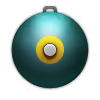 |  | ||||||
| 259 kg | 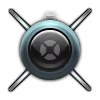 |  | ||||||
| 213.1 kg |  |  |  |  | ||||
| 2 × 2 × | 172.4 kg | 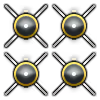 |  |  |  | |||
| 6 × | 183.6 kg | 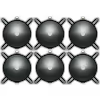 |  |  |  | |||
| 36 × | 163.3 kg | 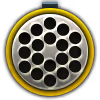 |  |  |  | |||
| 136 kg |  |  |  |  | ||||
| 167.8 kg |  |  |  |  | ||||







 2 x (130 / 380 / 600) %
2 x (130 / 380 / 600) % 
 2 x 208 %
2 x 208 % 

Flight performance | |
|---|---|
Survivability |
|---|
Weaponry | ||
|---|---|---|